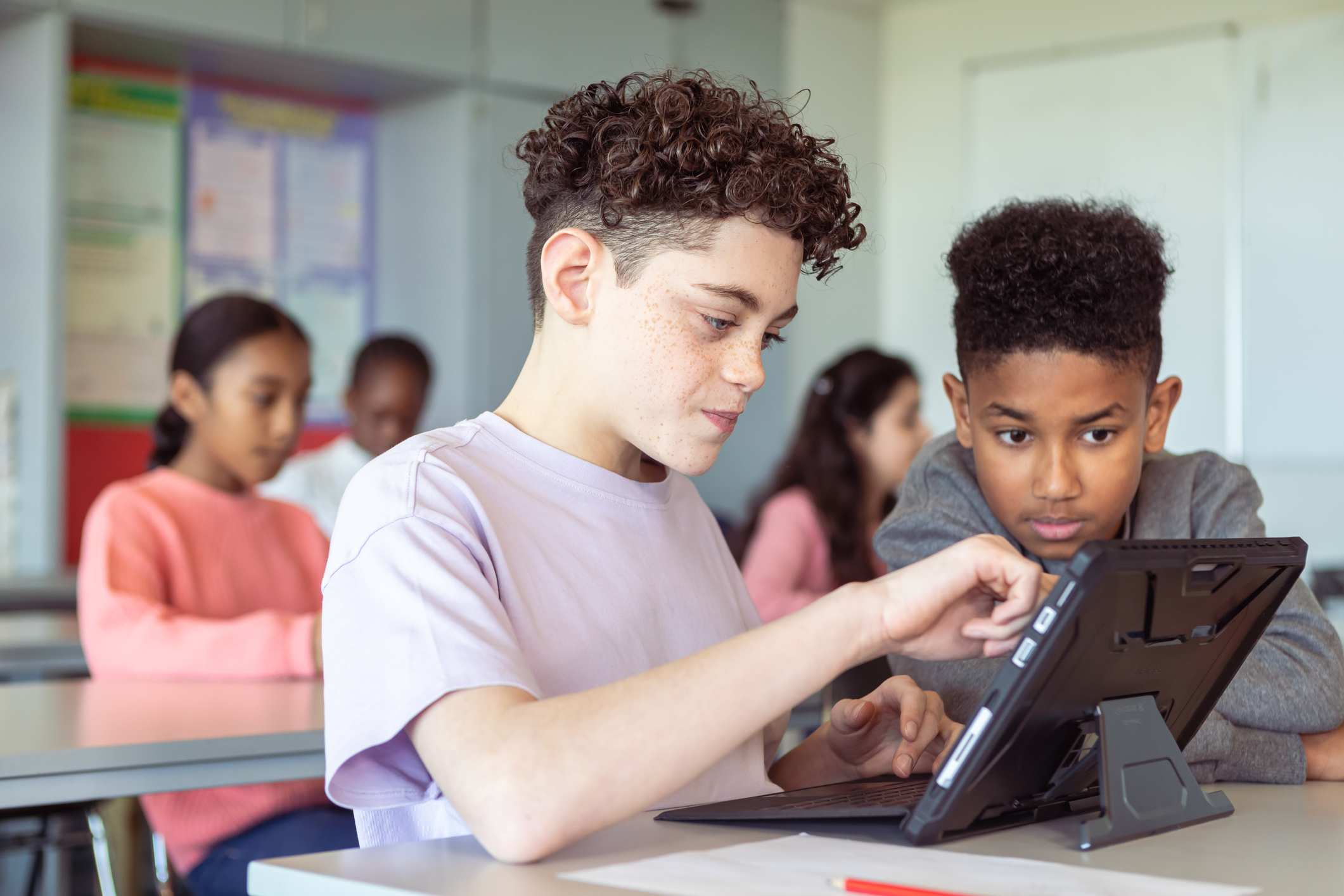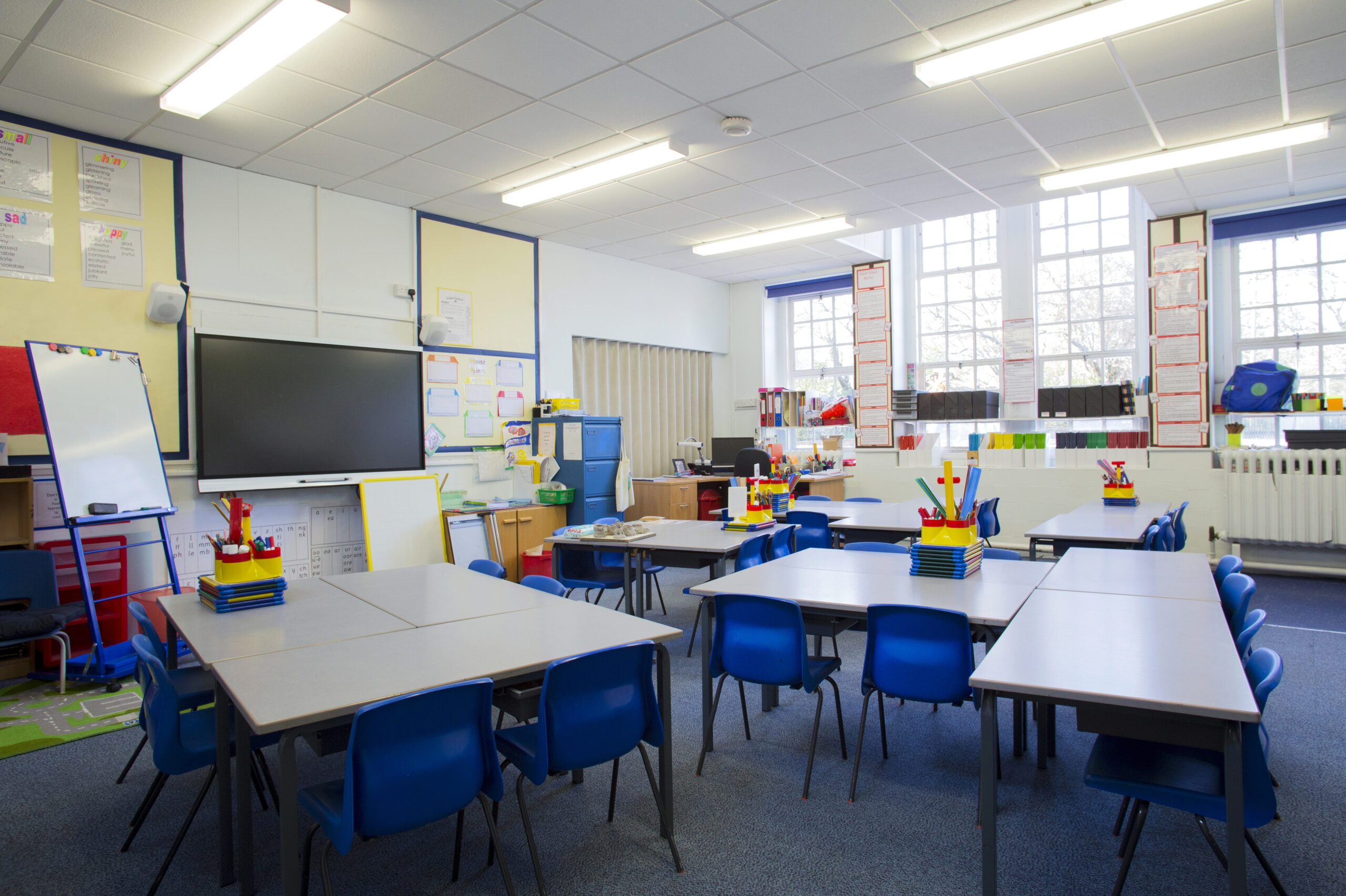
“I don’t know what else to do…” Those are words that I, and many educators like me, have said when looking at how to support our students. Teachers work incredibly hard to simultaneously prepare their students for standardized testing while also making sure each individual has what they need to be successful upon graduation.
However, for many teachers who teach a tremendous number of students at the secondary level, it can be very challenging when each student learns in their own way. When some students are ahead, facing boredom because they’re ready to move on from the lesson, others have been absent, and they are behind. Teachers struggle to find the time to support each individual because there are so many different topics in your curriculum and levels of where students fall. With all of these conflicting circumstances and pressure from your community to succeed, it is easy for teachers to feel as if they are failing and experience burnout as a result.
Many teachers face this problem every day. One such teacher was Kareem Farah, a high school math teacher from Hawaii and Washington, D.C.. As he taught in Washington, D.C., he felt like the “traditional model of teaching was not actually effective.” Upon reflection on his teaching approach, his team developed a structure called the Modern Classroom Project. The Modern Classroom is broken down into three components, all which are important for student success. In this post, we’ll explore the Modern Classroom Project and how the three pillars—Blended Instruction, Self-Paced Structures, and Mastery-Based Grading—can transform your social studies classroom.
Pillar 1: Blended Instruction
In a typical Modern Classroom, students will not generally be presented with new information in a direct lecture-style format. This is essential in social studies because the stereotype is that all social studies teachers drone on boring lectures. Although that is far from the truth, there are some who argue that a lecture is necessary to deliver need-to-know content. However, if the information is truly essential, what happens if a student is absent that day?
The Modern Classroom approach to Blended Instruction involves students accessing content and new information through teacher-created videos. These are not just random videos pulled off of YouTube; these are videos created and uploaded by the teacher.
For my class, I ensure to point my webcam at the front of the room if I’m lecturing, so that students are able to see me as they watch the video. This approach is incredible and allows students to proceed through the lesson at a pace comfortable for their own learning. A blended approach allows students to pause, rewind, fast forward, slow down, or speed up the video as necessary to learn in a way that is effective for them. This can even be supplemented with interactive video websites like EdPuzzle and Playposit where teachers can create questions that students must answer as they proceed through the lesson.
This blended approach has impacted my classroom in many ways. First and foremost, students who are absent can either watch the video at home or watch the video in a separate part of the classroom to catch up, then rejoin the class when they have finished. Because I upload these on YouTube, the barrier to watching the video is having something to watch it on and internet access. While not every student may be able to get over that barrier at home, teachers will have an easier time working with those students to catch them up at school. Since students are watching videos, this frees up more teacher time for small-group or individualized instruction. Now, I’m able to lecture to small groups who struggle with the lesson pace or need additional assistance because of this blended learning approach.
Don’t have time to create videos on your own? Active Classroom can be your online learning solution! Try a free 30-day trial today.

Pillar 2: Self-Paced Structures
The second pillar of a Modern Classroom involves self-paced structures. Because lectures are replaced with videos, this means that teachers can record several videos for their unit and upload them at once. This frees up students who are ahead in the lesson to progress forward, while students who require additional support are allowed to spend more time with the content.
In a typical unit, there will be three types of lessons: Must Do, Should Do, and Aspire to Do. The way that I think of these three classifications is:
- A must-do lesson includes the bare minimum information that a student needs to master a unit
- A should-do lesson provides additional information and practice that will help them perform better if they work on it
- An aspire-to-do lesson is something that is enriching and usually will be attempted by your high-achieving and gifted students
An example of a lesson sequence from my class was students learning about the Geography of East Asia (must-do), doing a short research activity to learn a little more about specific countries using the CIA World Factbook website (should-do), and then using that information to create a one-page infographic with photos (aspire-to-do).
The self-paced structure impacted my classroom in a number of ways. First, students appreciated the way that this approach fostered independent learning. My students in sixth- and seventh-grade desire opportunities to build responsibility and independence, so a Modern Classroom grants that freedom and independence with support. Second, since students could theoretically be at different places in a lesson, it challenged me to stay in-tune with my students. As a result, it made me more conscious of where students were at all times. Third, since students who are high achievers no longer have to wait for other students to catch up, they can proceed to those aspire-to-do lessons at a comfortable pace and potentially finish a unit early. When this happens, I often allow them to support other students or work on assignments from another class.
Pillar 3: Mastery-Based Learning
Mastery-based learning is achieved in a Modern Classroom when students earn a certain score on a rubric or percentage-based grade. In my class, I set the bar at 80% and I often give short quizzes (roughly around 5 questions). Therefore, the bar for mastery is students must answer 4 questions correctly in order to proceed to the next lesson. Some educators adminster mastery checks with paper quizzes, others prefer online-based quizzes; I prefer using a website called Quizizz. With their premium features, I can create a quiz of 20 questions and set it up as a bank so that the challenge increases for two students who receive the same set of questions. This helps prevent cheating and also makes it viable for repeat attempts since students won’t get the same exact questions every time.
For me, the greatest impact of the Modern Classroom has been the mastery-based learning approach because it helps me set high expectations in my classroom. I implement this for a variety of class levels, including when there are a high number of students with accommodations or English Learners. What I saw across the board was that it helps to create a high bar for students to overcome barriers. When students were given post-unit assessments, students increased scores by 20 and 30%. A couple of specific students who failed their first test were able to score 80 or 90% by the final test we took. In my experience, mastery-based learning made that possible because students allowed themselves set higher expectations for themselves instead of settling for the bare minimum standard.
Conclusion
Implementing Modern Classroom approaches in your social studies classroom can revolutionize the way you teach and how your students learn. By embracing blended instruction, self-paced structures, and mastery-based learning, you not only cater to the diverse needs of your students, but also fostering an environment where students can thrive independently and collaboratively. This approach allows students to take ownership of their learning, master content at their own pace, and achieve higher standards.
While the transition to a Modern Classroom may require an investment of more time and effort, the evidence of increased student engagement, improved academic performance, and a more dynamic, interactive classroom environment makes it worth the effort. By modernizing your social studies classroom with these innovative strategies, you can better support your students, reduce your own burnout, and create a more effective and enjoyable learning experience for everyone involved. Embrace the change, and watch your students flourish as they become more confident, capable, and prepared for the challenges of the 21st century.
Get a free trial of Active Classroom and explore more digital options to support your secondary social studies students
Jakob Walker is a middle school social studies educator in the greater Houston area. He holds a great passion for educating children and currently has a BA in History and a MEd in Curriculum and Instruction. He attended the University of Houston and has been an educator for five years. His hobbies involve doing anything creative, which most recently has involved game development and always involves cooking. He loves teaching and can’t imagine himself doing anything different.
